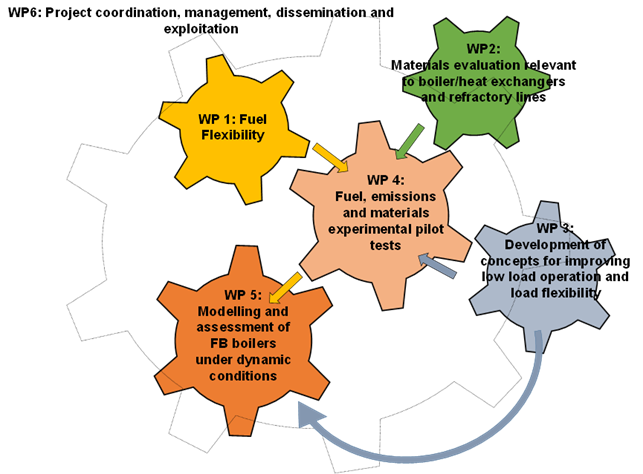
The overall demand in reducing greenhouse gas emission for avoiding the global warming is pushing the power generation in using renewable sources mainly deriving from wind and photovoltaic. This action leads to significant changes in the structure of European electricity generation and distribution systems. In particular, such a kind of system requires buffer actions to ensure the stability of the electrical grid and to cope with the peaking resources needed at hours of high demand. In this context conventional power plants have to increasingly shift their role from base-load plants to fluctuating back-up plants in order to control and stabilize the power grid. Combustion plants should be able to run both at the lowest part load possible at the highest possible efficiency which means high operation flexibility. Furthermore, the request of renewable energy implies the conversion of the conventional power plants in co-combustion type able to burn different type of biomass as renewable fuels.
Within this context the Circulating Fluidized Bed Combustors (CFBC) plants are ideal because they offer the following advantages:
- Fuel flexibility
The possibility of substitution of part of coal with low rank coals (like lignite) or even with other potential fuels like biomass gives the possibility of a rational use of the resources available in areas where the generation plant is located.
- Downstream flue gas cleaning is not usually needed
The capability to capture SOx during combustion by means of the injected sorbent together with the relatively low NOx emissions makes the flue gases enough clean in most of the cases.
- No high capital costs or high auxiliary power are required